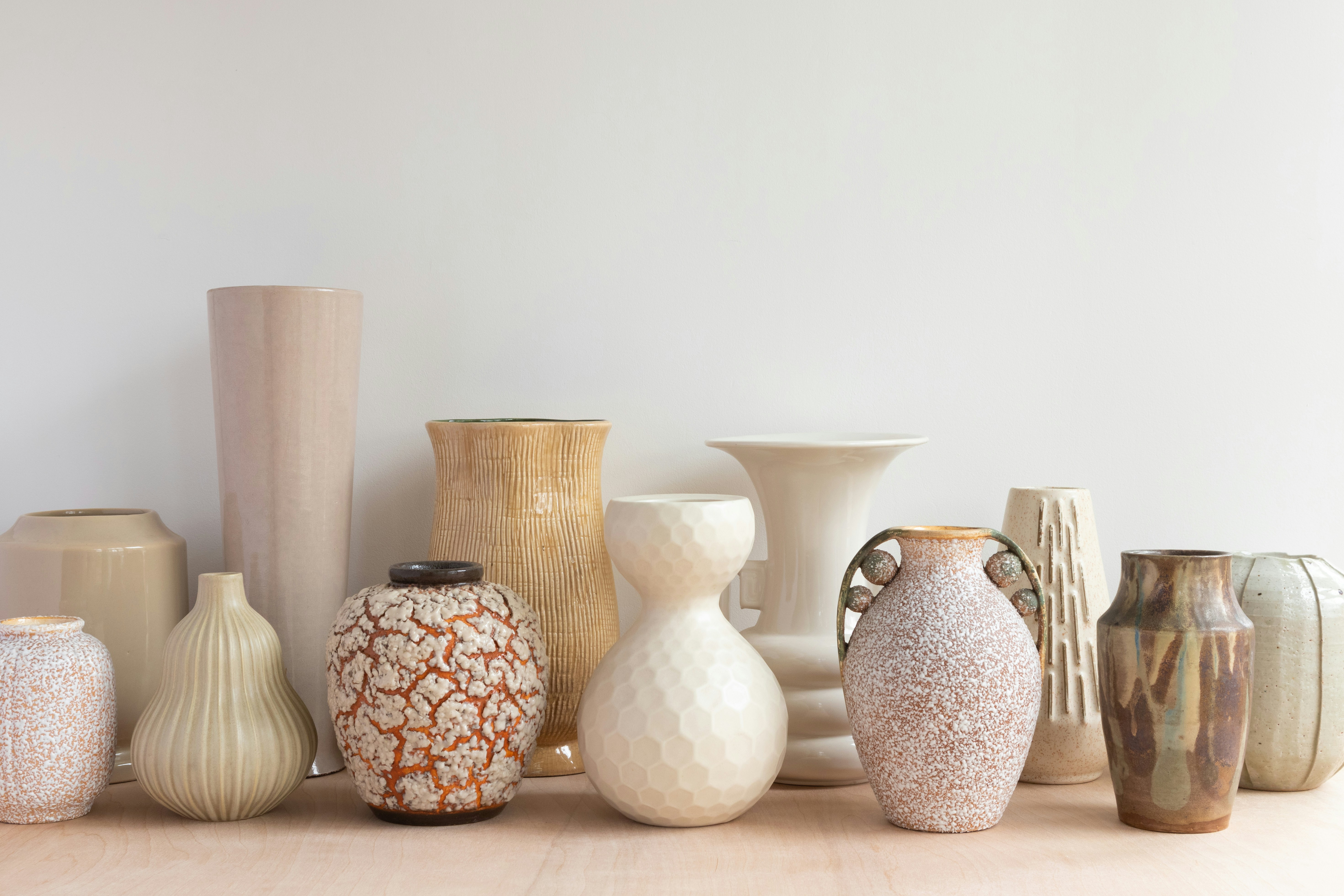
The Ultimate Collector’s Guide to American Ceramics and Pottery: History, Identification, and Value

The Ultimate Collector’s Guide to American Ceramics and Pottery: History, Identification, and Value
The origins of pottery can be traced back to various cultures across the globe, showcasing a long history that intertwines with human civilization. The development of ceramics has evolved significantly through different eras, reflecting the artistic and functional needs of diverse societies.
Early pottery
In the early stages, pottery consisted primarily of sun-dried wares that often lacked the ability to hold liquid. This limitation led to the discovery and use of kilns, which enable the firing of clay at higher temperatures. The atmosphere within the kiln, along with the type of clay used, plays a critical role in determining the result of an earthenware pot. Early pottery items typically featured simple decorations, with artisans using finger marks to create textures. Over time, more sophisticated decorative techniques emerged, including molded decorations and incised decoration.
Slip decorating became a popular method for embellishing pottery, especially noted in ancient Egyptian ceramics and North Native American designs. This technique involved applying a liquid mixture of clay to create patterns or images on the surface of the pottery. As pottery techniques advanced, glazing emerged as a significant innovation.
Evolution of varnishes and glazes
Early earthenware was primarily porous, making it unsuitable for storing liquids like milk. To address this, potters began applying varnishes and glazes, a process involving covering the fired pot with finely ground glass powder suspended in water before refiring. This process fuses the particles, effectively sealing the pores of the pottery, resulting in a more durable and functional product.
Among the most common types of glazed earthenware were lead glaze and tin glaze, each offering distinct finishes and characteristics. The introduction of glazing not only enhanced the aesthetic appeal of ceramics but also improved their practicality, allowing for better storage and usage in daily life.
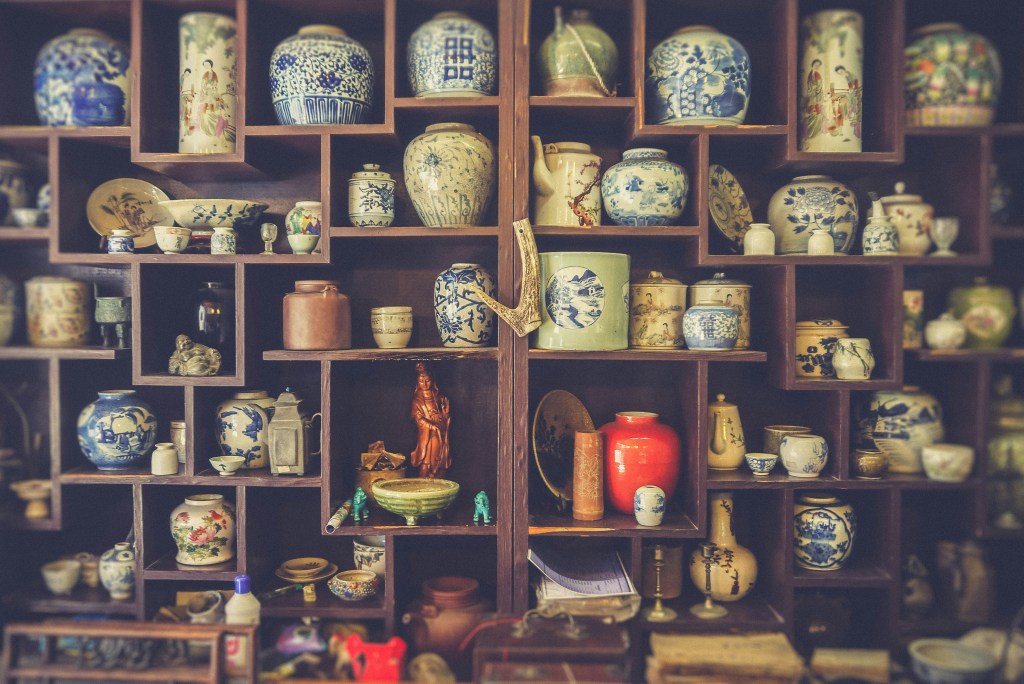
Pottery vs. Ceramics, Commercial vs. Studio: Understanding Basic Terminology
Pottery and ceramics are often used interchangeably, but there are important distinctions between the two.
What is pottery?
Pottery specifically refers to items made from clay that are typically durable and functional wares and containers, such as pots, mugs, and bowls. The term “pottery” is derived from the Old English word “potian,” meaning “to push,” which relates to the traditional process of shaping clay on a wheel. Potters use different types of clay, including liquid clay, colored clays, and other clay bodies.
In today’s market, pottery can be categorized into two main types: commercial pottery, which is mass-produced in factories, and studio pottery, created by individual craftsmen or small studios.
What is ceramics?
Ceramics is a broader category that encompasses all items made from clay and other materials that undergo a permanent change when fired. This includes not only pottery but also tiles, sculptures, and a variety of other objects.
The term ceramics signifies materials that undergo a transformation due to a firing process; once changed, these materials, including clay, do not revert to their original wet form. While all clay is a component of ceramics, other materials, such as glazes, can also be incorporated to enhance the final product.
Commercial vs. studio pottery
When considering the differences between commercial and studio pottery, it becomes clear that each serves distinct purposes and markets. Commercial pottery is manufactured in factories and is often mass-produced, prioritizing practicality and affordability.
In contrast, studio pottery is characterized by smaller production runs, with many pieces being unique or artistically crafted. This artistic flair often adds decorative value, making studio pottery highly sought after by collectors and enthusiasts alike.
Art pottery and its variations
In addition to these distinctions, there is also a notable category known as “art pottery.” This term refers to a style that may be produced either commercially or by artisans, yet it is celebrated for its aesthetic quality. Art pottery tends to emphasize creativity and design for decorative purposes, setting it apart from everyday utilitarian ware.
Art pottery represents a key aspect of ceramics, showcasing skill and creativity for both functional use and display.

Ceramics and Pottery in America
The evolution of ceramics and pottery in America reflects a rich tapestry of cultural influences and innovations.
Early American pottery
Early American pottery can be traced back to the 18th century when German settlers introduced decorative pottery techniques. These artisans primarily produced earthenware ceramics, featuring unique slip decorations, such as scratched carvings and notched edges. The use of redware, made from red clay, was particularly common, illustrating the settlers’ blend of practicality and artistry in their functional wares.
In New England, specifically in Massachusetts and Connecticut, ceramics began to gain recognition not only for their usefulness but also for their aesthetic qualities. Pottery wares developed distinctive designs that highlighted their decorative purposes. This trend shifted ceramics from utilitarian goods to valued art forms.
19th century pottery
The 19th century marked a pivotal moment in the history of American ceramics, as the arrival of English potters catalyzed a surge in production. Terra cotta and salt-glazed stoneware became particularly popular during this period, with manufacturing hubs emerging in states like New Jersey, Ohio, and Vermont.
This era also saw the onset of the Industrial Revolution, which transformed the pottery industry. While ceramics began to be mass-produced, international styles often dominated the market, influencing American potters to adapt their techniques and aesthetics to compete effectively.
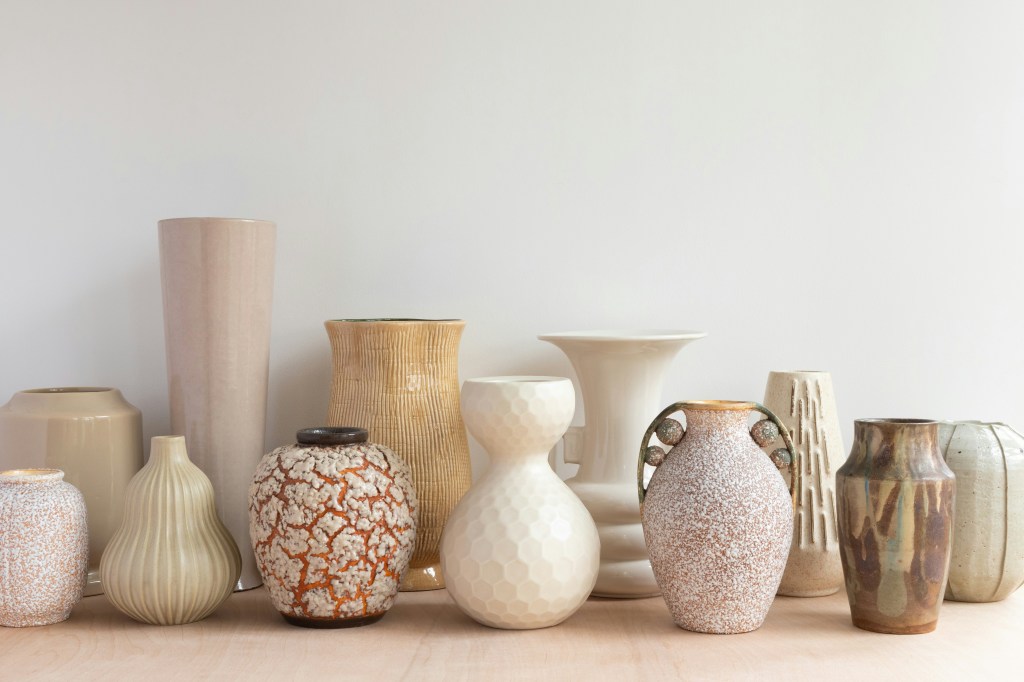
Famous American Pottery Makers and Studios
American pottery has a rich history, with prominent makers like Rookwood, Weller, and Roseville leading the way. These ceramic studios have made contributions to the art pottery movement, offering unique designs and craftsmanship that collectors seek today.
Weller pottery
Weller Pottery, originating from rural Ohio, emerged as a key player in the early 20th century. Known for its art pottery, Weller focused on creating distinct artware lines that captured the essence of the era. The company gained recognition for its innovative metallic glazes and drew inspiration from the Art Nouveau movement, creating pieces that seamlessly blended functionality with artistic expression.
Rookwood pottery
Rookwood Pottery stands out as the crème de la crème of American art pottery. Founded in 1880, Rookwood became famous for its exquisite slip paintings featuring animals, portraits, and natural themes. Among their offerings, the Vellum glaze was particularly revolutionary, known for its matte finish and sophisticated scenic imagery. Collectors often seek pieces with artist signatures, which indicate the authenticity and artistry behind early artware lines.
As the 20th century progressed, Rookwood expanded into architectural pottery, gaining international acclaim for its distinctive tiles, especially for fireplaces. However, the financial struggles of the Great Depression ultimately hindered the company’s prominence as public interest in pottery waned.
Roseville pottery
Roseville Pottery, another notable Ohio-based manufacturer, began with a focus on durable utilitarian wares before carving out a niche in art pottery by the turn of the 20th century. Initially finding success with functional items, Roseville gradually shifted towards producing handmade artware. By the 1910s, however, the rise of mass production changed the landscape of pottery making, leading to a decline in the handmade approach that had once defined the company’s identity.

Identifying American Pottery
Identifying pottery can be an exciting endeavor, especially when it comes to American pottery collectibles. Key identifiers such as markings, glazes, and signatures are essential in distinguishing different styles, forms, and periods. It’s beneficial to consult guides on pottery marks, American pottery identification, and antique pottery.
Inspection and maker’s mark
Notably, one valuable tip in identifying is to turn the piece over. By inspecting the bottom of the ware, you can uncover vital information, including the name of the maker, the color of the clay, the firing process, and much more.
The maker’s name or signature can be a significant clue in determining a pottery piece’s origin. However, many items may lack identifiable artist marks or maker marks, posing a challenge for collectors.
Factors to consider
To spot an American-made pot, there are several factors to consider. One of the most straightforward indicators is the weight: American wares are typically heavier, whereas some international pieces, like Japanese imports, tend to be lighter. Additionally, American pottery generally features heavier bottoms and thicker walls.
The color of the clay used in the pottery can also provide valuable insights. For instance, red clay is commonly used, and while it’s not definitive proof of American origin, a red base may suggest that the piece is American-made. Similarly, yellow clay was predominantly used by Ohio potteries, as it was readily available in that region.
Key features
Another critical element to examine is the foot of the piece, which refers to the base that comes into contact with a supporting surface. Most pottery has a dry foot with a dry rim around the edge, while some may display unglazed bottoms or stilt marks.
Lastly, numbers often found on the pottery help identify shapes, and these numbers are usually part of the mold rather than hand-printed. When all else fails, examining the glaze can provide essential clues. Glazes were typically applied in accordance with contemporary trends, with standard glazes being common in the early 20th century. Shiny finishes were particularly popular during the 1930s and 1950s, making it a valuable characteristic to note when identifying vintage pottery.
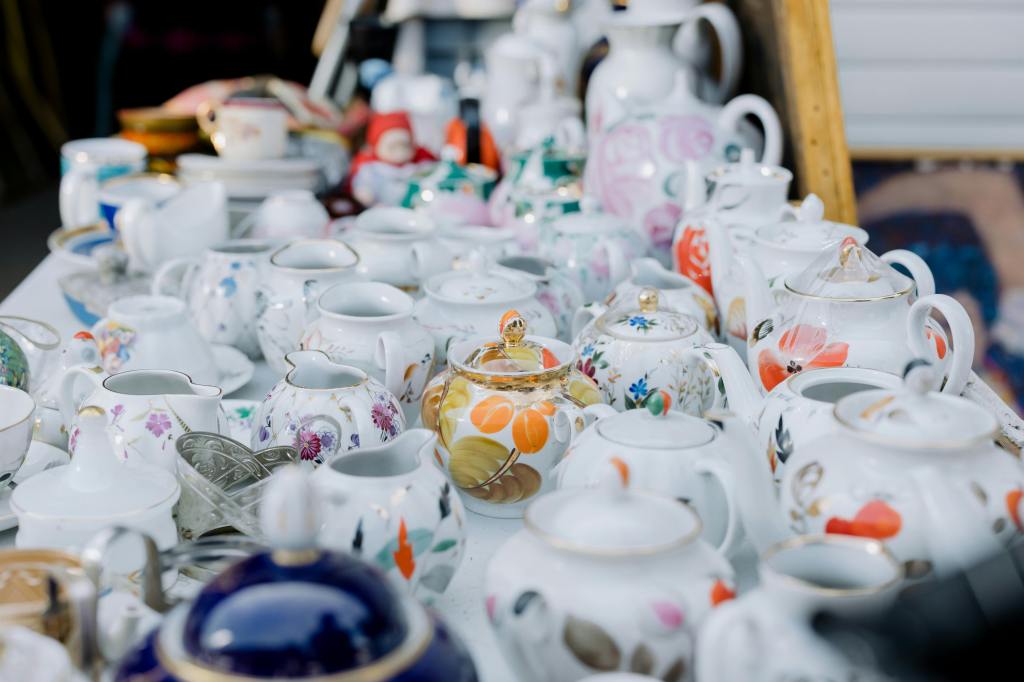
Identifying Native American Pottery
Native American pottery is a significant aspect of the cultural heritage of Indigenous tribes in North America. It serves as a means of expressing the rich traditions, beliefs, and artistic expressions of various tribes.
Different regions exhibit unique styles and techniques, resulting in diverse earthenware that reflects local resources, cultural practices, and historical influences. For instance, pottery from the Southwest often highlights intricate designs and vibrant colors, showcasing the skilled craftsmanship passed down through generations.
Hopi designs and patterns
Notably, the Hopi pottery is recognized for its unglazed finishes and the signature use of black and red pigments. Designs often feature significant symbols such as eagles and the butterfly maiden, both of which represent migration and connection to the natural world.
Navajo designs and patterns
In contrast, Dine (Navajo) pottery typically utilizes terra cotta-colored clay, showcasing a gradual color transition. It also features etched or painted designs that include the Yei—supernatural beings in Navajo culture—and horsehair techniques that create unique surface textures with porcelain. This blending of practices speaks to the Navajo’s interactions with neighboring tribes, illustrating an evolution of artistry through cultural exchange.
Zuni designs and patterns
Zuni pottery is distinct for its use of both white and red slips, contributing to its aesthetic appeal. The geometric patterns and motifs, such as the Zia bird and Zia sun symbol. The careful craftsmanship and vibrant designs found in Zuni pottery highlight the importance of both tradition and innovation.
Overall, Native American pottery is an art form rich in cultural significance, artistic design, and craftsmanship. As many of these traditions continue to thrive today, appreciating this art not only enhances our understanding of the diverse Native tribe.
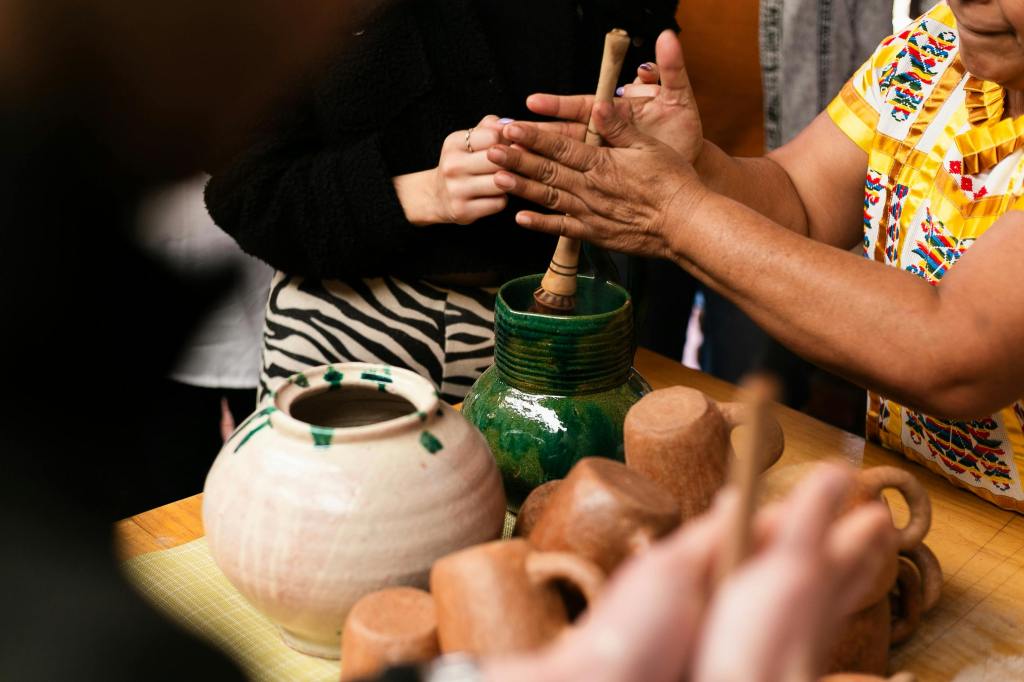
Why Collect Pottery?
The allure of pottery collecting lies in its remarkable blend of aesthetics and investment potential. Collectors are drawn to the unique artistry that each piece embodies, offering not only visual appeal but also a connection to history and culture. There is a growing interest in pottery as an investment as the potential increase in its value over time.
One of the significant benefits of collecting pottery is its role as a form of artistic expression and preservation. Each piece tells a story, reflecting the creative vision of its maker and the cultural context in which it was produced. By acquiring pottery, collectors ensure that these works are appreciated and preserved for future generations. Engaging with pottery allows individuals to explore various styles – whether they prefer earthenware, stoneware, ceramics, or porcelain. There is something for every taste, from painted masterpieces to elegant vases!
Pottery collecting also encompasses a wide range of experiences, from discovering highly valued Chinese ceramics to locating a genuine Josiah Wedgwood piece. Enthusiasts can expand their knowledge by visiting galleries, such as the prestigious Metropolitan Museum in New York, or exploring private collections if the opportunity arises.
Each encounter with a unique piece deepens the appreciation for the artistry and the historical significance of ceramics, whether they are ancient artifacts or more contemporary creations mass-produced by well-known pottery companies.
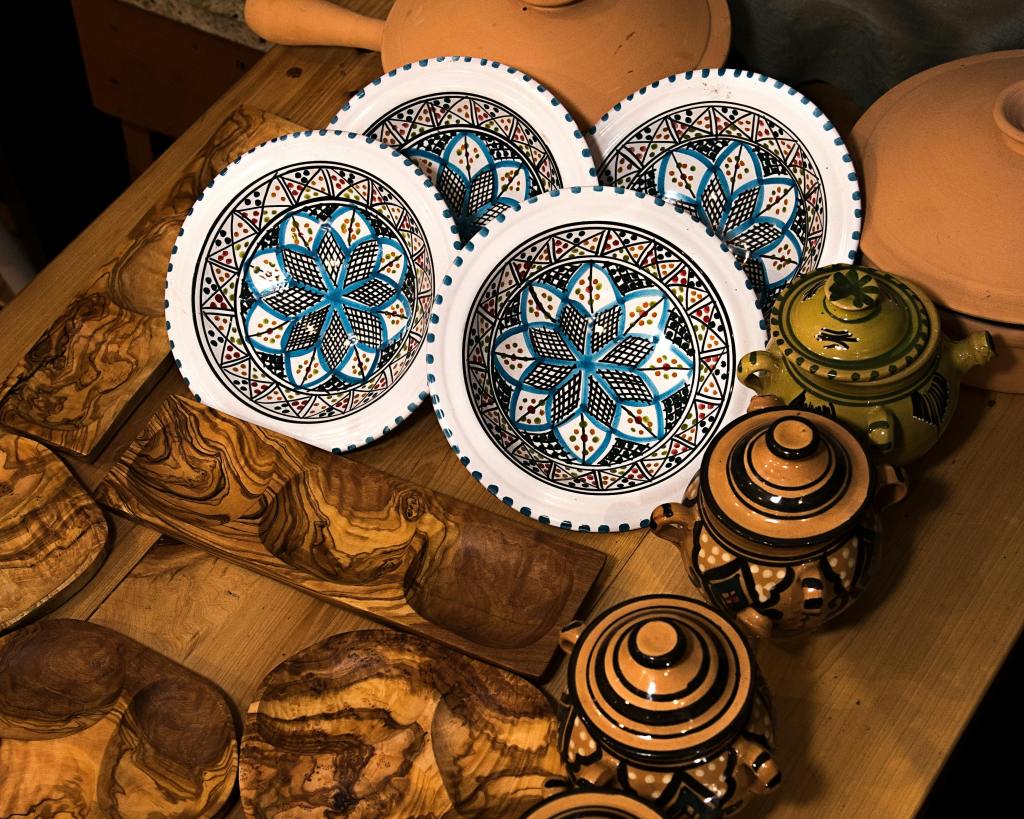
Sources
https://www.britannica.com/art/pottery
https://www.thesprucecrafts.com/what-are-pottery-and-ceramics-2745954#:~:text=There%20is%20commercial%20pottery%20or,or%20by%20an%20individual%20craftsman.
https://owlcation.com/humanities/history-of-american-ceramics-pottery-in-america
https://www.nga.gov/features/slideshows/pottery-from-the-index-of-american-design.html#slide_1
https://www.jasper52.com/blog/5-midwestern-companies-that-changed-the-art-pottery-game/
https://artsandculture.google.com/story/american-studio-ceramics-new-orleans-museum-of-art/SAXh94jajyh_Kg?hl=en
https://www.cajunc.com/art-american-pottery
https://www.palmstrading.com/different-pottery-styles/
https://ceramicartsnetwork.org/ceramics-monthly/ceramics-monthly-article/Why-Collect-Pottery#
About Collectibles Insurance Services
Collectibles Insurance Services has been protecting collections since 1966 and all coverage is provided by a carrier with a group rating of “A” (Excellent) by AM Best, the leading rating agency for the insurance industry.
Comprehensive coverage includes, but is not limited to: accidental breakage, burglary, fire, flood, loss in the mail, theft, natural disasters, and other causes of loss unless specifically excluded from the policy. Deductibles start at $0 for collector policies and we provide coverage for the market value of your collection for losses in excess of $50.
Additionally the protection extends At home and away, and we don't require collection itemization and serial number nor extensive paperwork and red tape.
